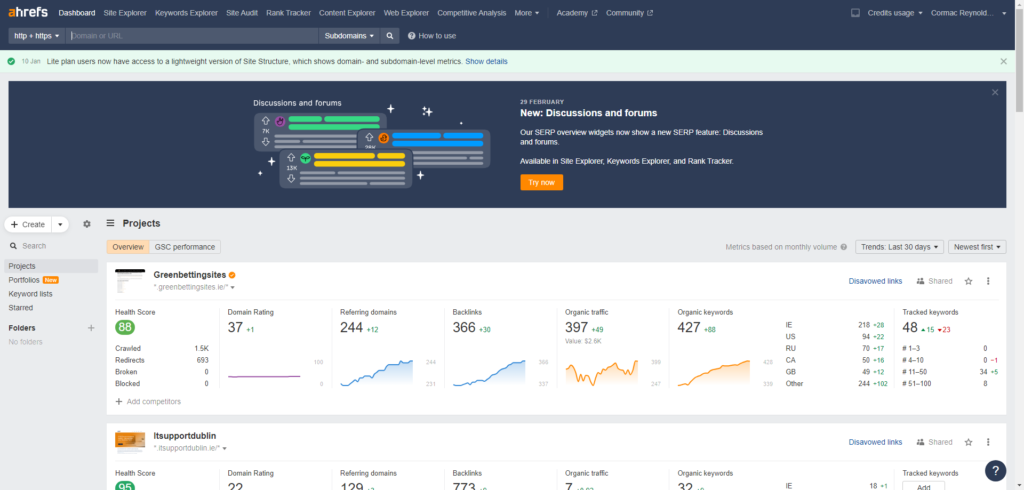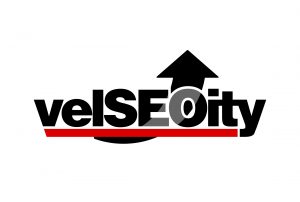Ahrefs is well-known for its sophisticated backlink analysis features utilsing DR or domain rating. This guide will explore how Ahrefs can enhance SEO strategies.
You will learn how Ahrefs enables you to deeply analyze your website’s backlink profile. This includes identifying issues and opportunities, tracking new and lost links over time, and researching competitors’ profiles for insights.
In addition, you will discover how to capitalize on Ahrefs’ data for your link building efforts. Whether you are new to SEO or an expert, this guide will explain how to use Ahrefs for detailed backlink analysis to improve search performance.
Let’s dive in!

What is Ahrefs
Ahrefs is an SEO software suite that offers a range of tools used by marketers from top companies worldwide. The platform is renowned for its backlink checker feature, providing valuable insights into backlinks and SEO, with one of the largest databases of live links.
Some of Ahrefs’ key capabilities include:
- Backlink analysis to evaluate the quality of links pointing to a site.
- Site explorer to research competitors’ backlink profiles for opportunities.
- Rank tracking to monitor keyword positions in search engines.
- Content explorer to uncover trending topics and viral content.
- Web crawls to analyze a site’s technical SEO.
- Site audits to identify issues like broken links or metadata problems.
Why Use Ahrefs for Backlink Analysis
With so many SEO tools out there, what makes Ahrefs stand out for backlink analysis and link building? Here are some of the key reasons Ahrefs is a top choice:
- More extensive backlink data – By crawling over 13 billion pages, Ahrefs provides incredibly detailed backlink data. The index includes over 4.2 billion live backlinks, far more than other tools. This enables deeper analysis.
- Helpful link quality metrics – Ahrefs offers powerful filters to assess backlink quality, such as follow/nofollow links, IP diversity, root domains, trust metrics, and more.
- Interactive visualizations – Charts and graphs display backlink growth trends over time. Anchor text clouds give an overview of anchor text ratios. These help spot issues and opportunities.
- Historic tracking – Monitor new, lost, and disavowed backlinks. Watch how your link profile changes over time.
- Competitor tracking – Analyze competitors’ backlink profiles to identify gaps and link building opportunities. Uncover links they have that you’re missing.
- Missed opportunities – Ahrefs reveals links pointing to competitors that could also link to your relevant content, representing outreach opportunities.
- Traffic valuation – Estimate the value of your backlinks based on the potential traffic they drive to your site.
Key Backlink Analysis Features
Now let’s explore some of Ahrefs’ key capabilities for backlink analysis in more detail:
Backlink Explorer
The Backlink Explorer provides an overview of all backlinks pointing to a target URL or domain.
You can filter these backlinks by:
- Type – Follow vs nofollow links
- Anchor text – The words that are used in the link
- IP address – To check link diversity
- Language
- Location
- URL
- Subdomain
Additional filters like trust metrics allow you to isolate high-quality links for analysis. Data can also be exported to CSV or Excel for offline analysis.
Backlink Growth Trends
This chart displays the number of backlinks your site has gained over time. You can spot positive trends and lulls as well as assess the impact of link building campaigns. Comparing to competitors helps contextualize your growth.
Top Pages
See which specific pages on your site attract the most backlinks. This reveals your cornerstone content and where to focus optimization efforts. It also shows content resonating well with audiences and backlink sources.
Referring Domains
This shows the number of unique root domains linking to your overall site or a specific page. More referring domains signal greater authority and diversity of links. Google favors sites with links from many separate domains.
Anchor Text
View the anchor text used in your backlinks, weighted by frequency. A natural profile includes a diverse mix of keywords, branded terms, URLs, and generic phrases like “click here”. Too much over-optimization raises flags.
Link Intersect
See domains that link to both your site and a competitor’s site. This reveals link building targets relevant to your content and industry.
Backlink Comparison
Comparing backlink profiles reveals where competitors are earning links that you lack. You can then research and pursue outreach to those sites to level the playing field.
Tips for Using Ahrefs for Link Building
Now that we’ve explored Ahrefs’ capabilities, here are some tips to capitalize on the data for your link building efforts:
- Identify reputable sites linking to competitors but not your relevant content. Check for sites you already have a relationship with. These become prime outreach targets.
- Regularly monitor your backlinks for any that have gone dead or redirected. Reach out and ask those sites to re-link to your current content.
- Closely analyze competitors’ anchor text distribution and use a similar natural profile for your link outreach efforts. Don’t over-optimize anchors.
- Use the Content Explorer to research trending topics and high-performing content types related to your keywords. Create linkable assets around these.
- Monitor the Ahrefs Alerts feature to be notified when competitors acquire significant new links that present opportunities.
- In the Link Intersect tool, search for domains linking to multiple competitors in your space. These could be ideal partners for you as well.
- Track your most successful pieces of linkable content over time, then double down on content pillars in those areas. Expand on what works.
- Use structured data markup on pages to help search engines understand your content and increase visibility for link building.
- Create share worthy visual assets like infographics to include in outreach efforts and provide value to partners.
The key is turning Ahrefs’ data into concrete link building actions. Identify prospects, create strategic assets, and nurture relationships with relevant potential backlink sources.
Limitations of Ahrefs
While Ahrefs is extremely robust for backlink analysis, there are some potential limitations to note:
- Their backlink index, while very extensive, does not include every single link on the web. Some niche links may be missed.
- Basic subscription plans place limits on keywords for Content Explorer and several emails for outreach. Upgrades provide more access.
- No integration with other SEO platforms yet. You need to cross-reference metrics separately.
- Learning to navigate the platform and derive insights takes time. The interface has improved but still presents a learning curve.
- Focus is exclusively on backlinks and content analysis. No support for technical/on-page optimization.
- Pricing may be cost prohibitive for freelancers or very small businesses with tight budgets.
- Data is predominantly historical. Limited ability to predict future algorithm changes.
Conclusion
Ahrefs is an invaluable asset for unlocking comprehensive backlink insights to strengthen your SEO strategy. With its vast data, helpful visualizations, and comparison tools, Ahrefs makes it easy to pinpoint issues harming your link profile and uncover untapped link building opportunities. You can monitor new links gained and lost as well as inform smarter outreach and promotion.
The depth of intelligence Ahrefs provides on your backlinks and competitors’ links can directly improve search visibility and rankings when acted upon.
While mastering any robust tool takes time, Ahrefs offers excellent training resources to help you capitalize on its data. The actionable backlink insights you gain can elevate your content marketing and link building results.
Don’t get overwhelmed by the data. Start with core metrics, compare to competitors, and focus on a few key opportunities. Consistent effort will compound gains over time.
If you’re ready to step up your link building strategy, Ahrefs is worth exploring. The backlink knowledge you gain can drive real SEO success.
Frequently Asked Questions
What is Ahrefs?
Ahrefs is an SEO toolkit that provides extensive backlink data and analysis to optimize link building efforts.
Why is Ahrefs useful for backlink analysis?
Ahrefs compiles vast backlink data with helpful metrics and visualizations to easily analyze your link profile and find opportunities.
What are some key features of Ahrefs?
Limitations include an incomplete backlink index, restricted keywords in basic plans, a learning curve, and no seamless integration with other tools.
How can you use Ahrefs for link building?
Identify prospect sites, analyze competitor anchor text, find viral content opportunities, monitor new links, and track top performing pages.
What are some limitations of Ahrefs?
Limitations include incomplete backlink index, restricted keywords in basic plans, learning curve, and no seamless integration with other tools.
How does Ahrefs track backlinks?
Ahrefs crawls over 13 billion web pages to identify backlinks and monitors new, lost, and disavowed links over time.
What metrics help assess backlink quality?
Important metrics include follow/nofollow links, IP diversity, number of referring domains, and anchor text ratios.
How does Ahrefs help with competitor analysis?
You can compare backlink profiles to see where competitors are earning links you lack and focus efforts there.
What is anchor text in backlinks?
Anchor text is the visible, clickable words in a link pointing to your site. Ahrefs shows your anchor text distribution.
How can I learn more about using Ahrefs?
Ahrefs provides training through blog posts, videos, webinars, and responsive customer support.




